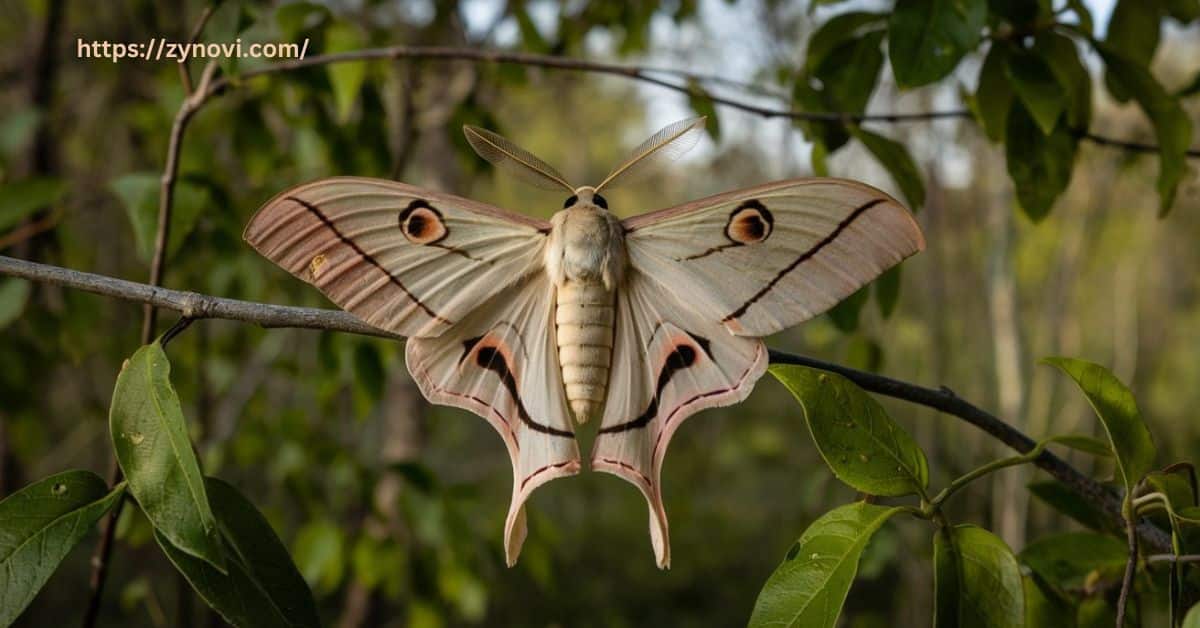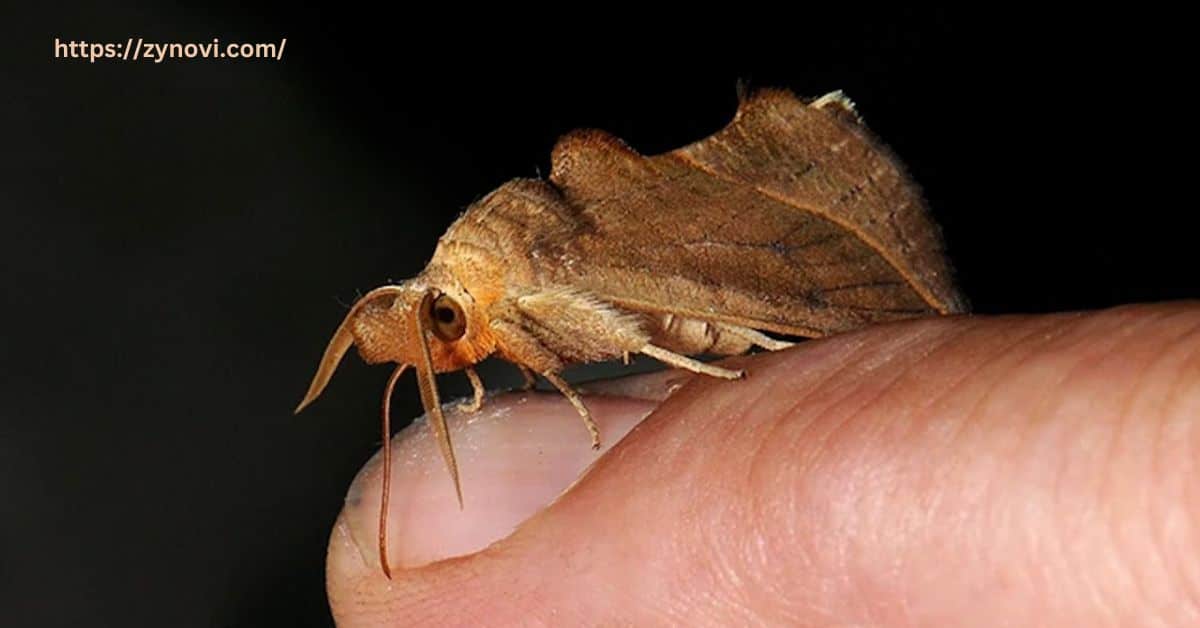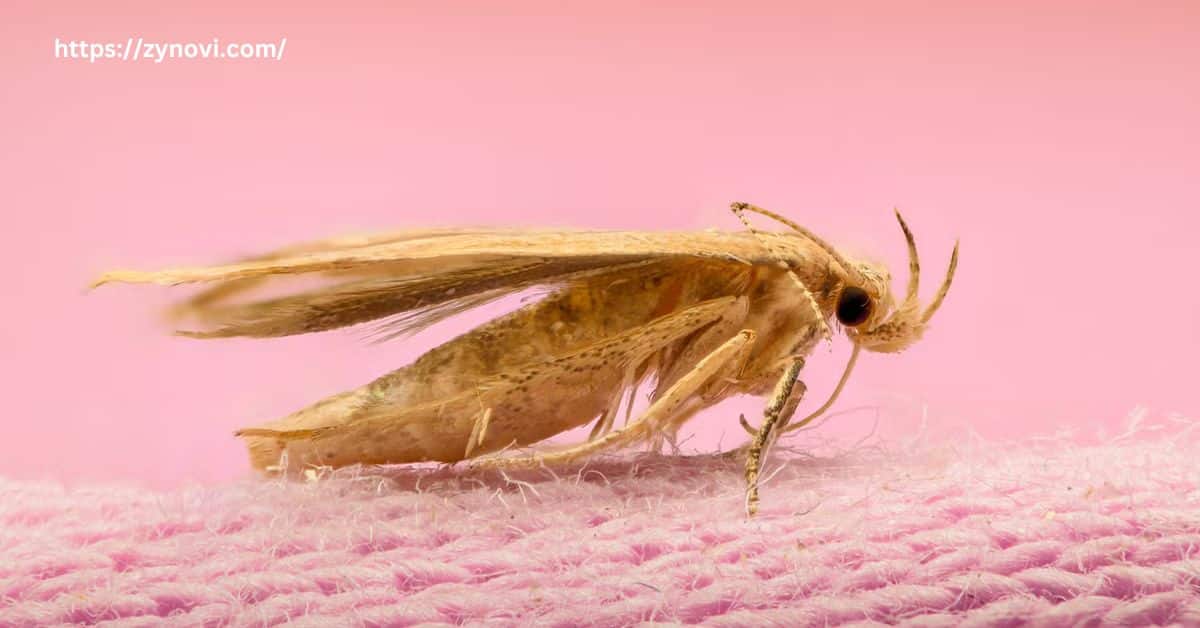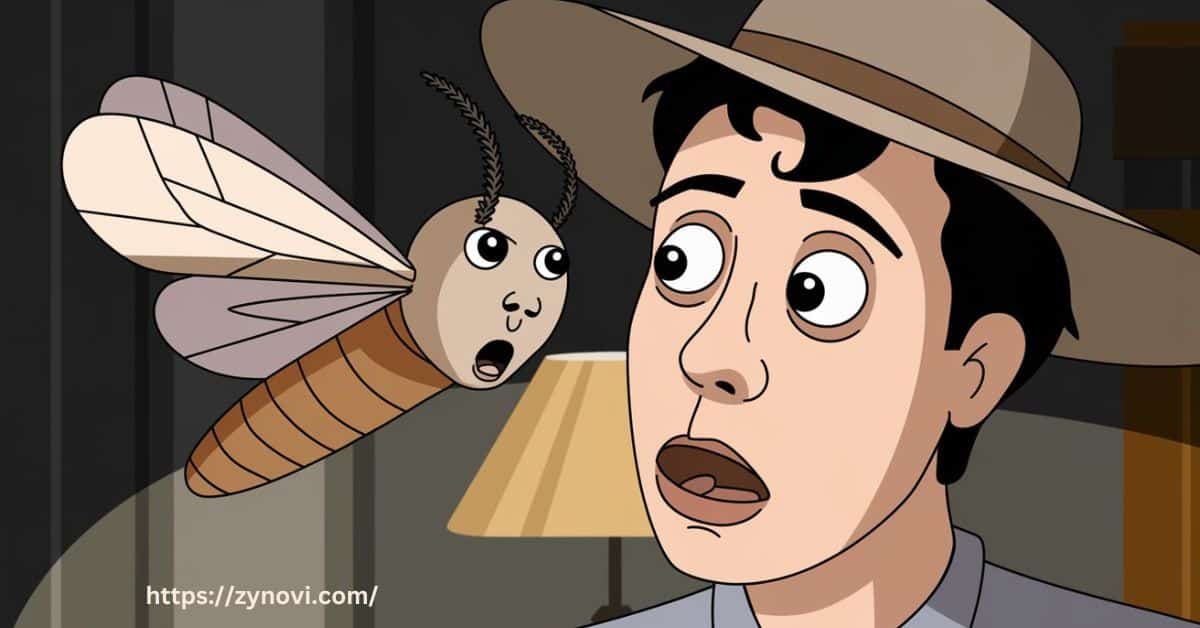Do moths attack humans? Moths are gentle creatures, and attacks on humans are not something you need to worry about.
If you’ve ever found a moth fluttering near you, you might have wondered whether they pose any real threat. However, there are many myths and misconceptions about Do Moths Sting? surrounding these fascinating insects.
In this article, we’ll explore the truth behind moth behavior, why they might fly toward you, and how to handle them if they do. Stick around to uncover all the facts and debunk the myths your curiosity will be satisfied!
What Are Moths?
Moths are insects belonging to the Lepidoptera order, a group they share with butterflies. With over 160,000 known species distributed across the globe, moths display incredible diversity in size, color, and habitat.
Atlas moth: Some species, like the magnificent Atlas are known for their striking patterns and impressive wingspans, making them one of the largest moths in the world.
Clothes moths: These are small species such as cloth moths are more discreet and often go unnoticed. Moths play a vital role in ecosystems, acting as pollinators and serving as a key food source for other animals.
Key Characteristics of Moths
| Key Characteristics of Moths | Details |
|---|---|
| Lifecycle Stages | Moths undergo a process of complete metamorphosis, transitioning through four distinct stages: egg, larva (caterpillar), pupa (cocoon), and adult moth. Each stage plays a crucial role in their development and survival. |
| Nocturnal Nature | The majority of moth species are nocturnal insects, meaning they are primarily active at night. They rely on natural light sources like the moon for navigation, a behavior that often draws them to artificial lights. |
| Diverse Diet | Adult moths primarily feed on nectar from flowers, contributing to pollination. In contrast, moth larvae are known for consuming natural fibers such as wool, silk, and cotton, which sometimes leads to fabric damage in homes. |
Moths play a vital ecological role, pollinating flowers and serving as a food source for birds and other predators.
Can Moths Attack Humans?

Physical Capabilities
Do moths bite human? Moths are gentle creatures with limited physical capabilities, especially when it comes to interactions with humans. They lack the anatomical features needed to bite or sting, as their mouthparts are specialized for sipping nectar from flowers rather than causing harm.
Even in the case of the rare “vampire moth,” which has the ability to pierce animal skin to consume fluids, their behavior poses no real threat to humans under normal circumstances.
This unique adaptation is more of a biological curiosity than a danger to people. Moths are entirely non-aggressive by nature.
Behavior Around Humans
Moths are naturally non-aggressive insects, making them harmless in their interactions with humans. If a moth flies toward you, it’s not an act of hostility but rather a response driven by curiosity or confusion.
Their well-known attraction to light, a behavior called phototaxis, often causes them to venture close to people near artificial lights.
However, this behavior is entirely harmless and unintentional. In reality, moths are far more likely to flee from perceived threats than to confront them. Their gentle and timid nature makes them non-threatening companions of the night.
Fact: Moths are more likely to flee from perceived threats than confront them.
Why Do Moths Approach Humans?
Moths approach humans for several reasons, most of which are tied to their natural instincts and sensory perceptions.
- Light Attraction: Moths use natural light sources like the moon for navigation, but artificial lights confuse this instinct. This disruption often causes moths to fly around lamps, porch lights, or screens, seeking a point of stability.
- Body Heat and Scent: Moths can be drawn to the warmth radiated by human bodies or specific scents such as sweat, perfumes, or lotions. These cues mimic natural signals like flower nectar, unintentionally attracting moths.
- Clothing Colors: Bright or light-colored clothing can resemble floral patterns, which moths associate with potential food sources. This visual similarity may lead them to approach people more closely than intended.
Are Moths Harmful to Humans?

While moths themselves are generally harmless, some indirect risks include:
Allergic Reactions
Moths’ scales, which are tiny and powder-like, can sometimes become airborne when the insects flutter their wings. For most people, these scales are harmless, but individuals with sensitive skin or allergies may experience mild irritation or allergic reactions.
Common symptoms include sneezing, itchy skin, or mild respiratory discomfort. While these reactions are rare and typically not severe, those with allergies should avoid direct contact with moths to minimize potential irritation.
Fabric Damage
Certain species of moths, particularly clothes moths, can cause significant damage to fabrics. These moths lay their eggs on natural fibers, such as wool, silk, and cotton. Once the eggs hatch, the larvae, not the adult moths, are the culprits responsible for feeding on the fabric.
The larvae consume the fibers, leaving behind holes and stains, which can damage clothing, upholstery, and other household items made from natural materials. This makes moth infestations a concern for anyone with valuable textiles.
Misconceptions About Moths
- Myths: Moths Bite Moths do not have the ability to bite or sting. Their mouthparts are adapted for feeding on nectar, not causing harm.
- Facts: Any damage to fabric is due to larvae, not adult moths.
- Myths: Moths Are Poisonous Some moths produce chemicals to deter predators, but these substances are harmless to humans.
- Fact: They’re meant to protect the moth, not cause harm to people.
- Myth: Moths Are Aggressive Moths are gentle creatures and avoid confrontation.
- Fact: Their erratic flight is usually a defense mechanism, not an act of aggression.
Preventing Moths in the Home

Practical Tips:
Reduce Artificial Light
Install yellow “bug” lights instead of bright white lights. These are less attractive to moths, helping to reduce their attraction to your home at night.
Store Clothing Properly
Keep garments made from natural fibers in airtight bags or containers to prevent moths from laying eggs on them. This is particularly important for seasonal clothing stored away.
Clean Regularly
Vacuum carpets, curtains, and closets regularly to remove moth eggs, larvae, and any potential food sources. This helps reduce the chances of an infestation.
Use Natural Repellents
Natural repellents like cedar blocks, lavender, and peppermint can deter moths. These scents are unpleasant to moths but safe for humans, making them ideal for use in closets and drawers.
Seal Entry Points
Check for gaps in windows and doors, and seal them to prevent moths from entering your home.
This will help keep moths from finding their way indoors.
| Repellent | Effectiveness | Additional Benefits |
|---|---|---|
| Cedar Blocks | High | Long-lasting and eco-friendly |
| Lavender Sachets | Moderate | Pleasant aroma |
| Moth Traps | High | Easy to use and non-toxic |
| Essential Oils | Moderate | Versatile for other household uses |
FAQs
Do Moths Bite?
No, moths do not have the anatomy to bite humans.
Are Moths Dangerous to Humans?
Moths are not inherently dangerous. Allergic reactions to their scales or damage caused by their larvae are the most significant concerns.
What Should I Do if a Moth Lands on Me?
Simply let it fly away or gently guide it off with your hand. Moths will not harm you.
Can Moths Cause Allergic Reactions?
Yes, in rare cases, people may react to moth scales or dust. Keeping windows closed and using air purifiers can help reduce exposure.
How Do I Keep Moths Out of My Home?
Use natural moth repellents like cedar blocks, lavender sachets, or moth traps. Store clothing in sealed containers and regularly vacuum to eliminate eggs or larvae.
Conclusion: Do Moths Attack Humans?
In conclusion, the question “Do moths attack humans?” is easily answered with a firm no. Moths are not aggressive and pose little to no threat to humans. Instead, they are naturally drawn to light and certain fibers, not people.
By understanding their behavior and implementing a few simple prevention tips, such as reducing artificial light and storing clothes properly, you can coexist with moths without worry.
It’s time to let go of the myths and embrace these gentle, nocturnal creatures, recognizing the important role they play in the environment.










